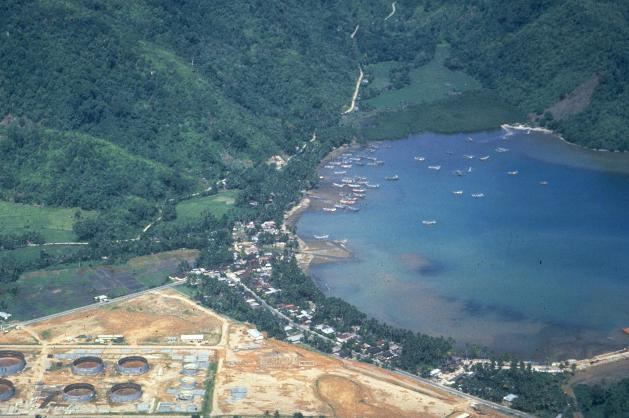More than 55 different fish species and some 23 coral genera live in the Marine Protected Area (MPA) of Pulau Pieh in western Indonesia – a telling example of a scientific endeavour with longterm benefits for society and the ecosystem. Numerous reefs fringe the hundreds of small islands off Padang. Until the late 20th century, they boasted a great variety of coral formations and were home to large populations of fish and invertebrates. But due to fishing with explosives, pollution, and increasing tourism, the coral reefs between the islands were gravely damaged in the 1990s. In the last couple of decades, hundreds of square kilometres have been destroyed, leading to increasingly large areas of coral rubble deposits. ZMT scientists soon urged for the establishment of a Marine Protected Area (MPA) to cover thousands of hectares of offshore waters in the West Sumatra province of Padang. In order to embark on establishing an MPA it is crucial to identify all stakeholders, including commercial and recreational fishers, divers, environmentalists, and other concerned citizens, and ideally, to involve them in the decision making
and possibly the management process. In this way, the socioeconomic aspects of establishing MPAs, which often determine success or failure, can be considered along with the ecological factors. When fishermen are excluded from MPAs and their access to fishing grounds is restricted, their incomes decline. It is therefore imperative for policymakers to inform them about the
long-term advantages of sustainable use.
The MPA of Pulau Pieh is a prime example of how collaboration between institutions and stakeholders can lead to success. Cooperation between the Indonesian Navy, Bung Hatta University, ZMT, the local government and the non-profit organisation (NGO) Sanari led to the confiscation of vessels that were repeatedly caught fishing with explosives, and the imprisonment of blast fishers. This all helped to establish the MPA.
Several newspapers reported on the collaboration, supporting protection of the coral reef and leading to increased civil awareness for coastal and environmental issues. Having created a scientific basis for protecting Padang’s ecosystem, the actual establishment of the MPA took five years. Many small surveys using local boats and a large exploratory cruise with the Thai vessel Fantasea in 1995 were needed as well as the support of the German Embassy in Jakarta. Inaugurated in 2000, with an area of 40,000 ha, the Pulau Pieh MPA was the first MPA in western Indonesia.
Over the years, joint efforts by the local university, the NGO Sanari, and ZMT led to the allocation of funding to support reliable management of the MPA. In 2009, the newly established Indonesian Ministry for Marine Affairs and Fisheries (MMAF/KKP) provided additional funds for a permanent office, patrol boats, and a PR budget. The Pulau Pieh MPA was thus finally established and the area efficiently protected.
The project is still ongoing. Research and scientific exchange between the partners continue.
Original MPA project page from 1998: http://scorpionfish.zmt-bremen.com/
Project Partners |
|---|
|
CV Sanari Padang Bung Hatta University Padang |





